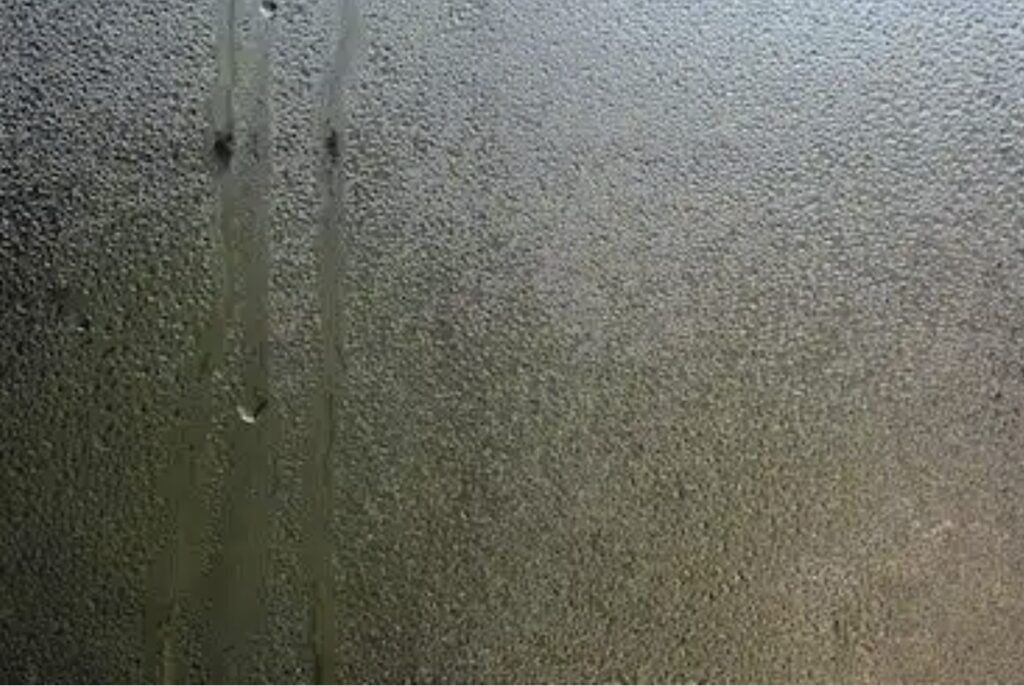Inside the Home that Looks Like Roof Leaks
Summary: Dennison Exterior Solutions installs waterproof underlayment to prevent roof leaks. However, other internal factors such as humidity can inside the homes living areas cause water spots on ceilings. Homeowners should adjust their furnace humidifiers to reduce indoor humidity, as this can damage roof decks and insulation within the attic.

Ideal Humidity

Ideal Himidity
The Details: Dennison Exterior Solutions & Gutter Toppers installs the waterproof underlayment called ice and water shield to the roof deck that extends at a minimum extends 5 1/2’ up from each eave edge, three feet out where a lower roof meets a wall, all valleys and around any protrusions through the roof. The waterproof ice and water shield adheres itself not only to the roof deck but anything it comes in contact with such as the walls, pipes and skylights ensuring that the “roof” can not leak however, the items it’s attached to can – like the siding as it is not waterproof and in fact has weep-holes under the lap to that moisture can drain out.
While our company has never personally toured the inside of your home we are not sure of the layout but we wanted to make you aware of another possible issue which happens to the inside of homes that typically has cathedral ceilings as opposed to open attics. Even though the conditions exist in both types of attics/ceilings it’s substantially more noticeable with cathedral ceilings. In homes with larger open attics where you can somewhat enter, the condensed water from the humidity inside the home never drips totally into the interior of the home where a water spot appears on the ceiling as it typically evaporates inside the attic or is absorbed by the insulation.
According to the Department of Energy the average home produces through human activity, washing dishes, taking baths or showers and the humidifiers on furnaces in the winter places 3 to 5 gallons of water into the air. That warmer air/water circulates up through the ceilings, through any insulation and hits the colder underside of the roof deck and condenses into small water droplets. Those droplets of water then wither drops down on to the insulation or can run down the truss’s collecting larger amounts of water from other droplets as gravity pulls it down the pitched truss’s until the weight of the water or it hits another wood support. The water then can drip down onto the ceiling until a water spot can be seen on the inside of the home. A homeowner may “think” it’s a roof leak when it is not. It is due to too much humidity inside the home.
The above situation happens quite often. Homeowners with skylights notice it much sooner than since there is no ceiling or insulation or attic to hide it until it drips through. In many cases people with skylights think their skylight is leaking when in fact it’s too much humidity inside the home. We inform homeowners of this situation especially since the installation of the ice and water shield makes the roof waterproof. Homeowners need to adjust the humidifier on their furnace by turning it down slightly until they no longer see the moisture.
Most homeowners “think” the humidity only happens during the summer months but with air conditioners that is not the case. Most of the damage to roof decks and to attic insulation occurs during the winter months due to too much humidity. The humidity causes the humidity to collect on the underside of the roof deck until gravity takes over and it either falls down on to the insulation matting-down the insulation reducing its effectiveness wherein the furnace has to work that much harder to keep it warm inside the home causing the humidifier to place even more moisture into the air. This process also causes air conditioners to run longer during the warmer months in order to keep it cooler inside the home all due to the damage humidity does during the winter months. Rainy days also greatly increases the humidity inside homes which is why many homeowners wrongly conclude that since it’s raining outside it must be leaking to the inside when in fact it’s just a coincidence based on where we have installed the waterproof underlayment.
We hope this information helps you to understand what may be contributing to some of what people may think are external leaks when in fact they may be due to too much humidity inside the home.



